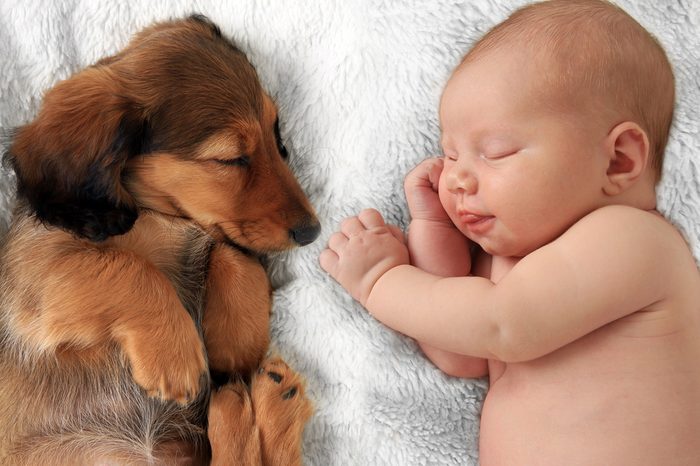
Your dog has a lot in common with a toddler
“The secret to understanding dog behavior is that the average dog has a mind that’s equivalent to a human two- to two-and-half-year-old,” says Stanley Coren, PhD, a professor emeritus in the psychology department at the University of British Columbia. Dogs can understand about 165 words, meaning they follow more of what you’re saying than just “walk,” “treat,” and “Ginger,” but they are most likely to learn single vocabulary words that have concrete objects or activities associated with them.

Some dogs are smarter than others
Coren says that “super-dogs”—those in the top 20 percent of the intelligence spectrum—are a little closer to three-year-olds, and can understand more than 250 words. “Every now and then you get a Mozart or Dickens of dogs who can understand 1,000 words,” he says, mentioning psychologist John Pilley’s dog Chaser, a border collie who showed knowledge of the names of 1,022 objects in a study published in the Behavioural Processes Journal in 2011. “But John worked with her four hours a day, like Mozart’s dad.” Take a look at these 13 secrets your dog knows about you.
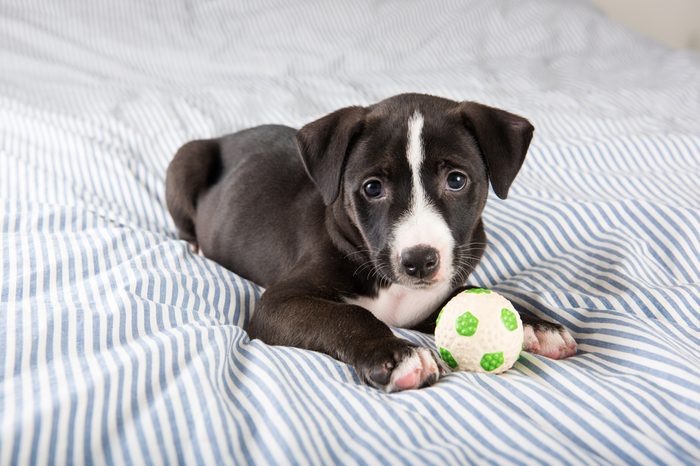
Practice makes perfect
Chaser didn’t just learn the names of more than 1,000 objects—she also learned verbs, according to a USA Today article about her. Pilley can tell her to “take ball to Frisbee,” and she understands not just which objects to use but also what to do with them. Plus, she knows that “ball” means any round object, and “Frisbee” means any spinning disk object. Pilley says he had to label all the objects (800 of them were animal toys) because he couldn’t remember all their names, but Chaser gets them right 90 percent of the time.
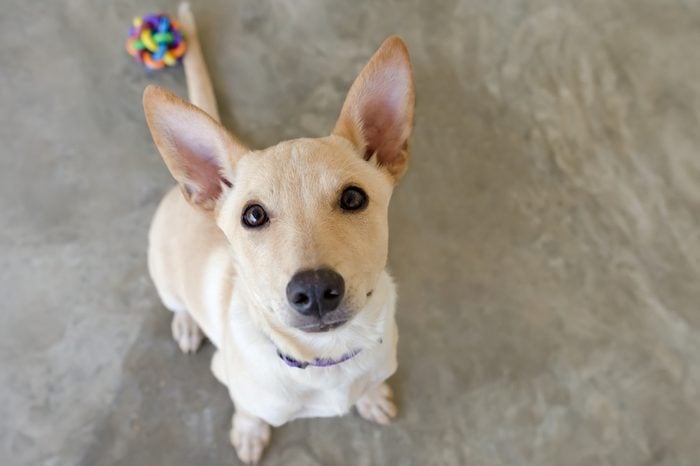
Communication with dogs isn’t one-way
Dogs talk back to us as well—sometimes through barks and whines, but more often through body language, like when your dog paws at the bottom of the sofa to indicate that her ball is stuck underneath. “Humans are very visual creatures,” says Monique A. R. Udell, PhD, an assistant professor in the department of animal and rangeland sciences at Oregon State University. “Pet dogs are excellent at adapting their body language to provide us clues about how they feel and what they want.” Dogs also communicate using their tails: See the 12 secrets your dog’s tail is trying to tell you.
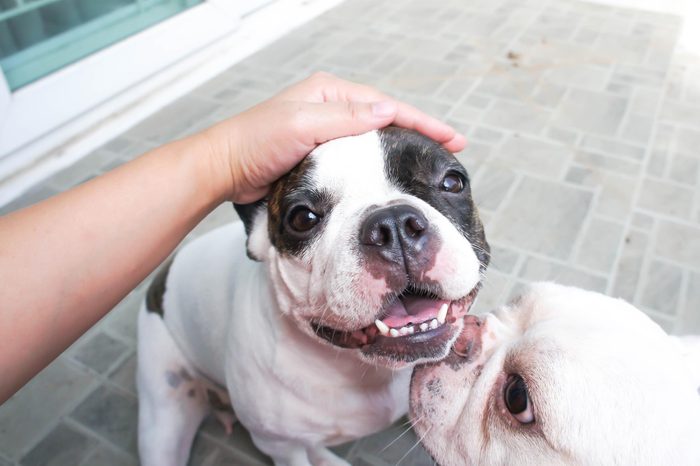
Dogs can get jealous
Did your dog snap at you when you petted another pooch at the park? He could be jealous. Researchers compared how dogs reacted when their owners were paying attention either to a stuffed dog or to another inanimate object such as a pail or a book. Nearly three-quarters of the dogs exhibited jealous behavior about the fake canine, but only 42 percent and 22 percent reacted badly to the pail and book, respectively. Scientists suspect that canine jealousy dates back to the days when dogs competed for food and other resources.
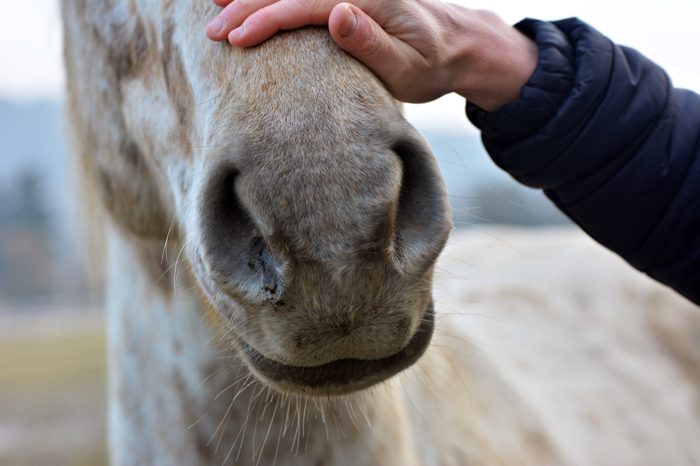
Horses can read your emotions
A 2016 study in Biology Letters showed that horses can tell the difference between happy and angry human expressions—when they looked at photographs of people making negative faces, their heart rates climbed and they turned their heads to allow them to focus with their left eye. This action is called “left-gaze bias“—researchers think they do this because the right hemisphere of the brain is better at processing negative emotions (dogs do this too).
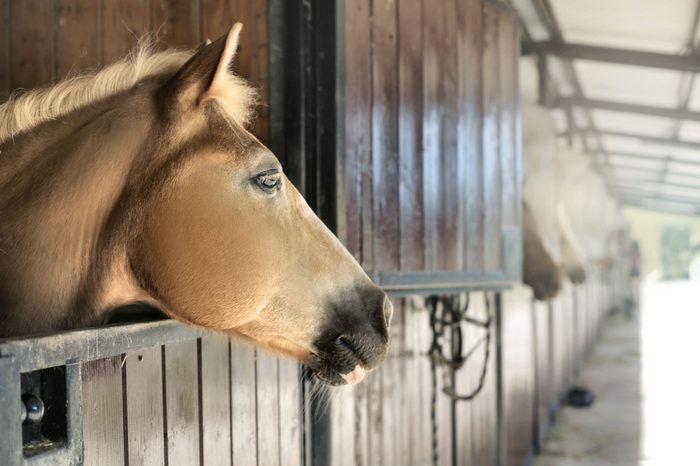
Horses remember if you were mad when they last saw you
A new study explained in New Scientist took the experiment one step further—several hours after showing horses photographs of people with happy or angry expressions, those same people visited the horses in person, wearing neutral faces. If a horse had previously seen an angry-looking photo of that person, it exhibited a left-gaze bias and showed other signs of stress, including scratching the floor. Horses visited by people whose happy faces they’d seen in photos weren’t stressed.

Cats remember their own name, but they still might ignore you
Japanese researchers found in a recent study that cats recognize their own names. Regardless of who was speaking, most cats reacted in the same way, moving their heads or perking up their ears when their names were spoken, the researchers wrote. So if Fluffy isn’t coming when you call? Yup, she’s probably just ignoring you.

Cats communicate with us too
Cats are not always as obvious as dogs about their meaning, but they are communicating. John Bradshaw, a University of Bristol anthrozoologist and the author of Cat Sense: How the New Feline Science Can Make You a Better Friend to Your Pet, told the Cut that feral cats he’s studied rarely meow to each other. Domesticated cats, on the other hand, meow all the time—because they’re meowing to get the attention of humans. Don’t miss the 17 things your cat would like to tell you.
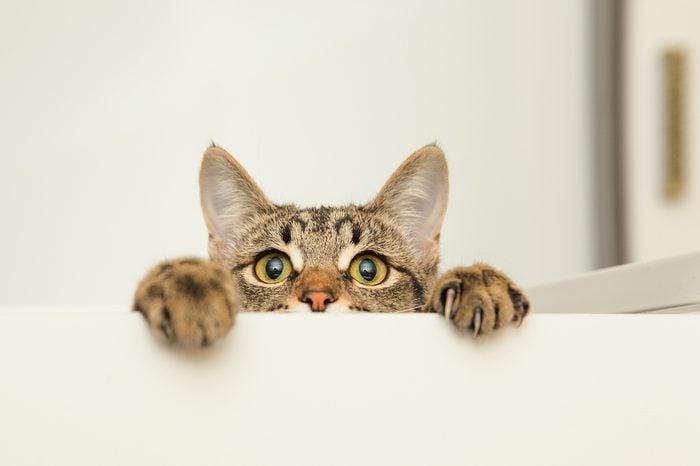
Some cats fear vegetables
If you’ve ever watched cat videos online, you’ve probably seen a few owners scaring their cats by surprising them with cucumbers. The cats typically jump back in fear and run away. So why are they so scared of a harmless vegetable? Well, there is no definitive answer, but one theory is that cats are so afraid of cucumbers because they look like snakes. Another theory is that they get startled simply because they’re surprised a random object has appeared next to them, similar to how humans get scared when someone sneaks up on them. Although scaring your furry friend might be funny, experts advise against it because it causes unnecessary stress and can be bad for their health.
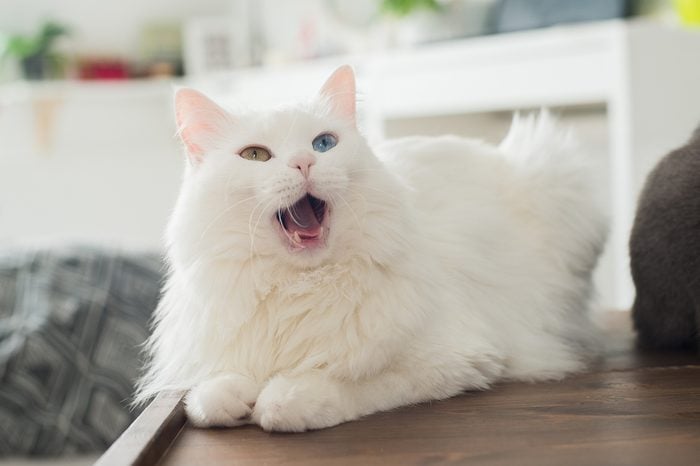
Different meows have different meanings
For a 2003 study published in the Journal of Comparative Psychology, researchers played recordings of 12 different cats in a variety of situations to listeners. People who had “lived with, interacted with, and had a general affinity for cats,” according to the abstract, were better at identifying which scenario each recording was made in. That is, cats are making different sounds to get different messages across (“I’m bored,” “feed me,” etc.), and their people know what they’re saying—most of the time. These are the signs your cat is secretly mad at you.
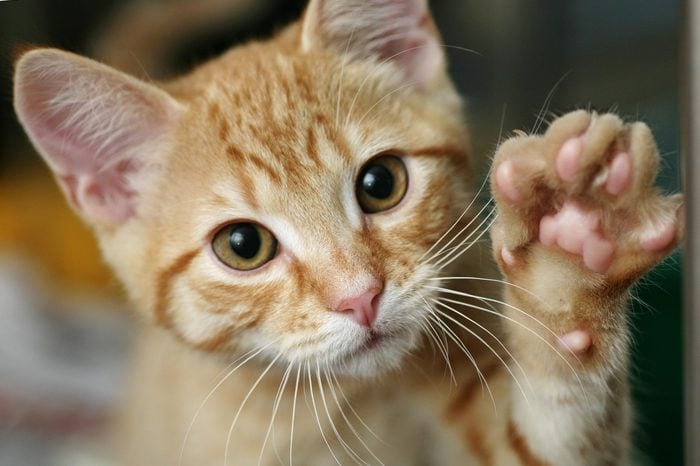
Cats don’t like being ignored
“Cats will more frequently approach and play with a person who is attentive to them compared to a person who is ignoring them,” says Kristyn Vitale, PhD, a researcher in the Human-Animal Interaction Lab at Oregon State University. Then again, she says, sometimes cats want to be left alone. Vitale says if a cat is showing signs of aggression (dilated pupils, a fast-twitching tail, fur standing on end, hissing, or growling), just walk away. “It’s better to end the interaction before an incident occurs that may lead to a strain in the relationship,” she says.
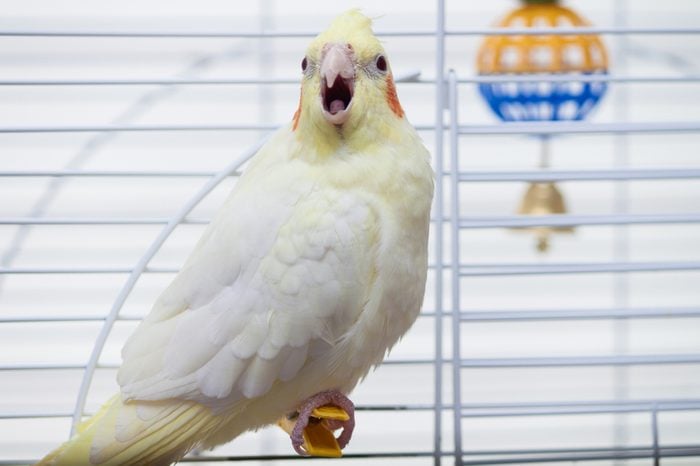
Parrots are master talkers
We’re amazed to hear pet birds ask for crackers, but in the wild, parrots have elaborate ways of communicating with their own giant flocks. Timothy F. Wright, co-author of the book Parrots of the Wild: A Natural History of the World’s Most Captivating Birds, found that separate populations of the yellow-naped Amazon parrots he’d been studying in Costa Rica call out in different dialects that stay the same within each group over decades. Young birds can learn multiple dialects and communicate across groups. These are the hilarious bird photos you won’t want to miss.
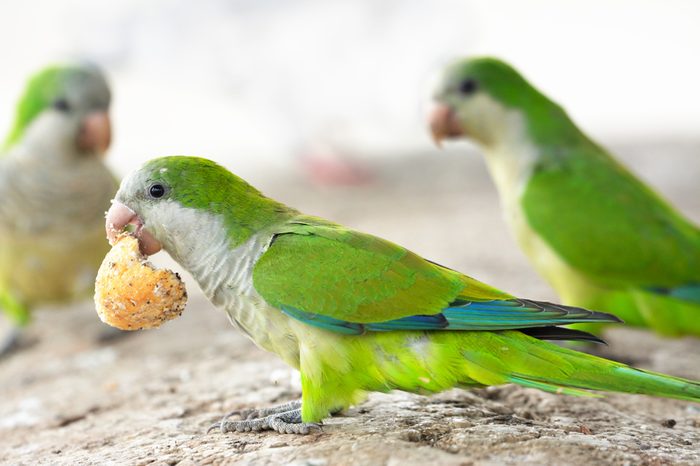
Parrots can mimic us because they’re good at copying one another
In the wild, parrots squawk at each other constantly, updating one another on where the best seeds are and which direction to search next for food. Wright told the New York Times that it’s very rare for the birds to mimic the sounds made by animals from other species in the wild. But in captivity, they’re doing their best to fit in and communicate with their human flock.
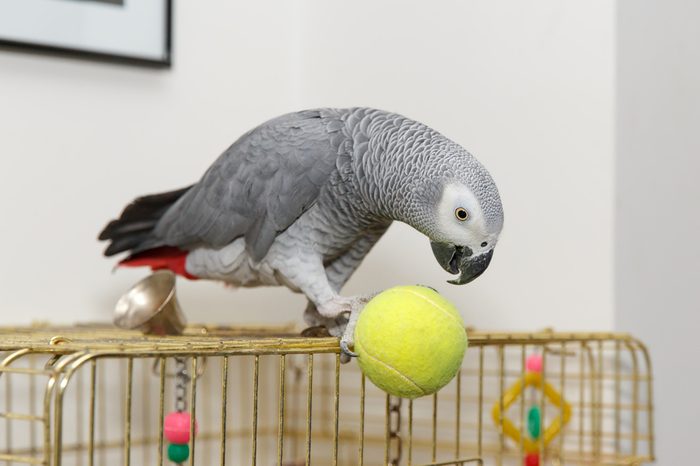
Parrots can do more than talk
Alex the African Grey parrot was famous for learning to say more than 100 words to accurately describe objects, actions, and colors. He was trained by Harvard researcher Irene Pepperberg starting in 1977 until he died in 2007, and it was clear that he wasn’t just mimicking words back to her: Pepperberg wrote in her 2008 book Alex & Me that the bird learned fairly early on to say “no” when he didn’t want to cooperate with training. Eventually (despite his occasional irritation with the process), he learned to count to six and understood the concepts of bigger and smaller and same and different. These are the world’s smartest animals.

Dogs will tell you when they’re lonely
Alert pet owners know that the pitch, duration, and frequency of their dog’s bark differ depending on the circumstances, and researchers are learning what some of that nuance among vocalizations means. For example, dogs bark differently when they’re encountering a stranger than when they’re hungry or want company. Two to four high-pitched barks mean a dog senses a threat and is alerting the pack to potential danger, Coren says. But a long string of single barks with pauses in between? That probably means your dog is lonely.
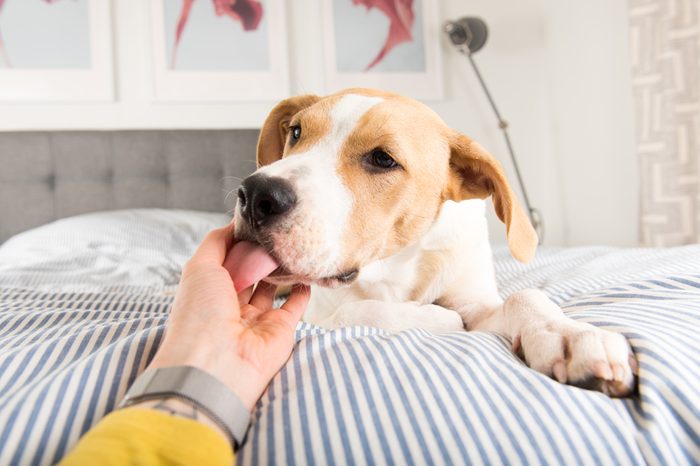
Social evolution explains why some pets bond to humans
Like parrots, dogs evolved to live in groups, and therefore have highly developed communication skills. Unlike birds, they’ve evolved into an entirely separate species since they’ve been hanging out with us. To wit, wolves communicate well with their fellow pack members, but dogs have learned the ins and outs of reading human emotions through facial expressions and language. A recent study in Biology Letters found that pet dogs could tell from photos of human facial expressions and recordings of voices whether the person in question was happy or mad. (They can read the faces and vocalizations of other dogs too.) These are the signs your dog trusts you.
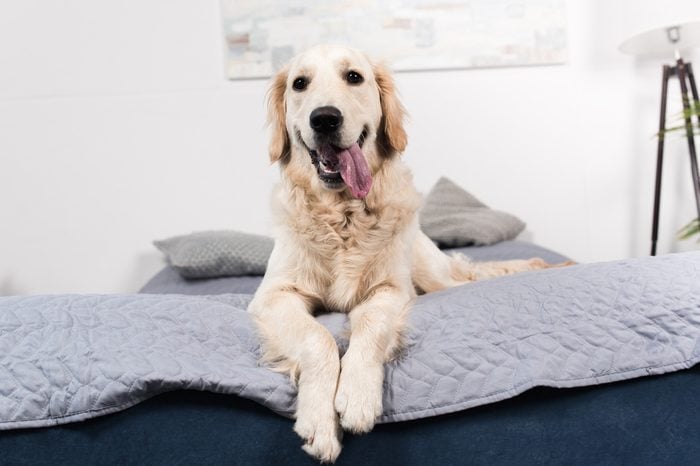
Adult dogs are big puppies
“Dogs, and many domesticated animals, retain more juvenile characteristics throughout their lives than their wild relatives,” says Monique Udell. “These include puppy-like physical features, more time spent focused on socializing and play, and a greater variety and frequency of vocalizations as adults.” In other words, some of our favorite features of domesticated dogs—floppy ears, big eyes, playful spirits, chattiness—are things that few wolves carry with them to adulthood. The same is true for your feline friends: “Cats also show signs of developmental delays, or the retention of juvenile characteristics into adulthood,” Udell says.

Your dog does not feel guilt
Like intelligence, dogs’ emotional maturity is similar to that of toddlers, Coren says. “The average two- to three-year-old has all the basic emotions, like joy and sadness and fear and anger and disgust and surprise,” he says. “But they don’t have complex social emotions like guilt, shame, and pride.” He explains that when you come home to find that your dog has made a mess, and she tucks her tail and looks ashamed, she’s really just afraid of your anger—she’s smart enough to associate the mess with you being upset, but guilt isn’t part of her repertoire. Here are 15 signs your dog might be angry.
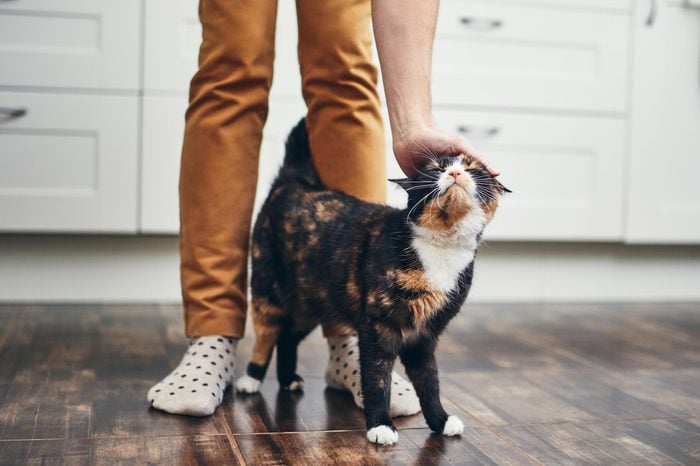
The way you nurture your cat can affect their nature
Just as kids can be influenced by the environment in which they grow up, an owner’s personality can rub off on a cat. One study found that cats with neurotic owners were more prone to exhibit stress, fear, and even aggressiveness.
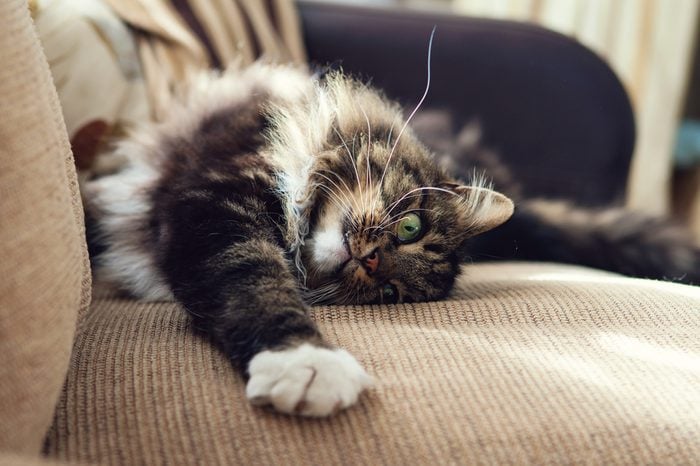
Cats don’t scratch your furniture to mess with you
The Humane Society says cats are stretching, flexing, removing dead cells from their claws, and marking territory when they scratch furniture. In fact, cats have scent glands in their paws, so they mark your sofa with both their smell and visible scratch marks. Susan Bass, director of public relations at Big Cat Rescue in Tampa, Florida, tells Mental Floss that big cats scratch too—tigers, which are very territorial, leave claw marks 8 to 10 feet high on trees, which lets passing tigers know to be on the lookout.
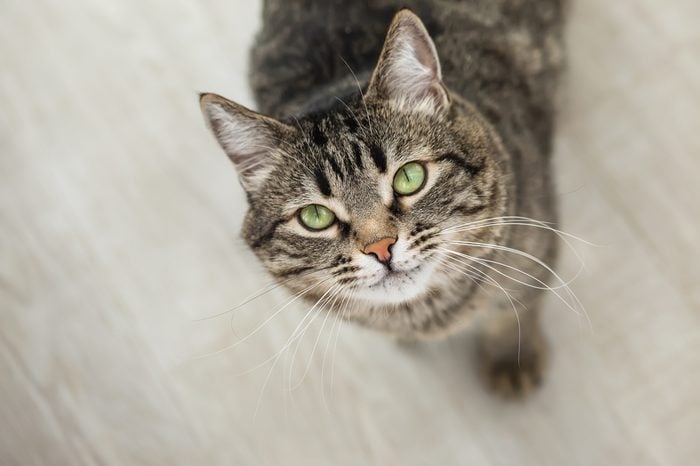
Your cat is watching you
It might feel like your cat isn’t interested in your opinions, but science shows that he cares what you think: For a study published in the journal Animal Cognition in 2015, researchers set up an unfamiliar and slightly scary scenario—an electric fan with ribbons attached. When cats entered the room with their owners, 79 percent looked back and forth between their person and the fan, indicating that they were trying to see whether the human was afraid. Half the owners were told to act confident and happy and approach the fan, and the other half were to act nervous and move away from it. The cats whose people acted scared were significantly more likely to look for a way out of the room. Don’t miss the mistakes cat owners should never make.

Dogs can’t hear everything better than we do
Their hearing in high ranges is far superior to that of humans. Coren says we’d need 28 extra keys at the top of a piano to include all the tones that dogs can hear beyond our ability. But when it comes to lower tones, humans actually hear better than dogs. However, Coren says, they can hear just fine within the range of the human voice, so when you call and they don’t come, it’s usually by choice. Hearing high notes is just one of the dog superpowers that humans don’t have.
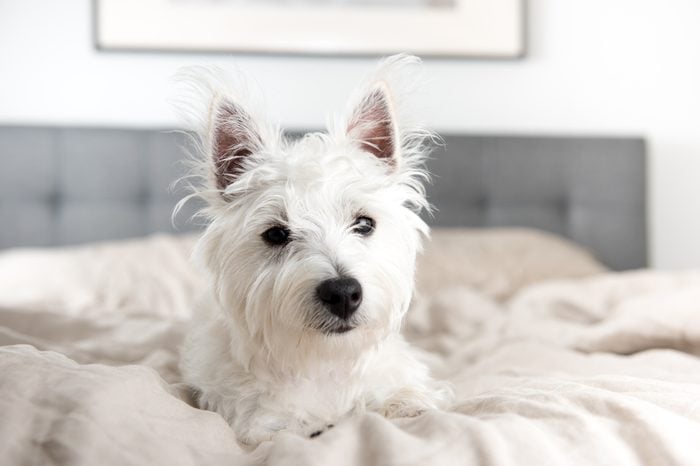
Light-colored dogs have worse hearing
In fact, Coren says, dogs that have predominantly white coats have a higher chance of being congenitally deaf in at least one ear. Among Dalmatians, about a third have congenital deafness. So if your white dog doesn’t come when called, it might not be because he’s decided to disobey.

Older dogs can go deaf
Sound waves create motion in tiny hairs in the cochlea, and over time these hairs can break off and lead to hearing loss. The same process happens in humans, which is why Grandpa needs those hearing aids. Coren says that larger dogs have thicker hair cells that are more likely to break off, making Great Danes likely to lose hearing at a younger age than a pug. Did you know that puppies are born deaf? Here are more unbelievable facts you didn’t know about dogs.
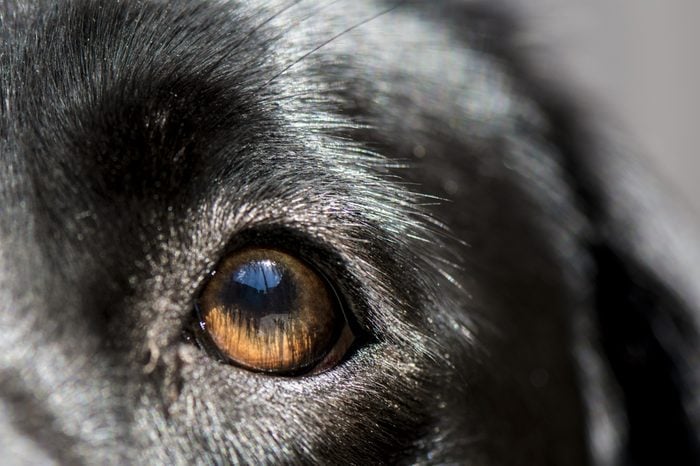
Vision does matter for dogs
Although Coren says that vision ranks third in importance in the hierarchy of senses (after smell and hearing) for dogs, it plays an important role in the way dogs communicate through body language. “Imagine the old ancestors of dogs are canine pack hunters,” he says. “If the leader sees a deer and yells to the rest of the pack, then guess what—they’ve lost their lunch because the deer will hear that yelling too.” Studies show that dog trainers who use hand signals are more effective than those who rely on just voice commands as well. Here are more training secrets dog trainers won’t tell you for free.
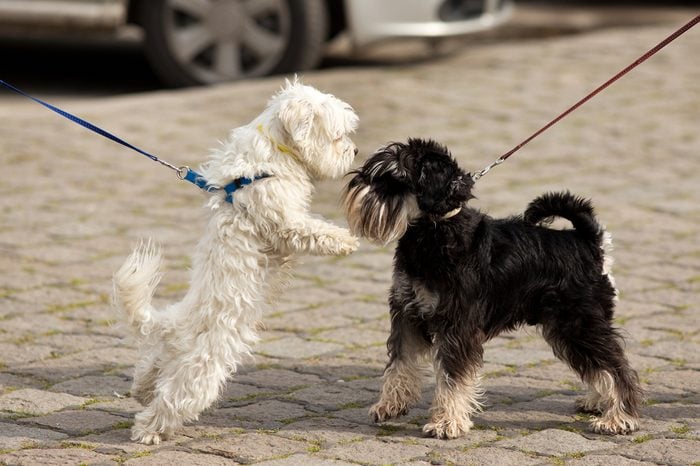
Dog-to-dog body language is hard for humans to grasp
Coren says he hears from people all the time who don’t understand why their lovely dogs get in fights with other pups while out walking on leashes. “You generally have an insecure dog owner,” he says. “As they approach an unfamiliar dog, the owner pulls back on the dog’s leash, which causes its front legs to leave the ground.” Front legs off the ground comes across as a threat to the other dog, which is why many react with hostility. Over time, the dog comes to expect these reactions from the dogs she meets, and she’ll approach them with aggression herself. Check out the ways dogs are smarter than you think.
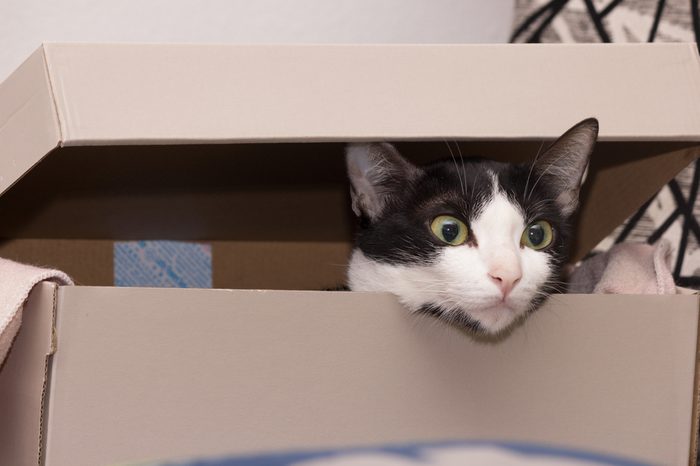
Cats feel safe in boxes
That’s why they climb right into that shoebox or suitcase. According to Live Science, wild cats like to hide too. They’ll find a place where nothing can sneak up on them from behind, and if they spot something they want, like a snack or toy, they can pop out of their secret lair and retrieve it, and then return to safety. Susan Bass told Mental Floss that the tigers and other cats at her sanctuary will hop into any box big enough to hold them, just like the little tabby living at your house does.
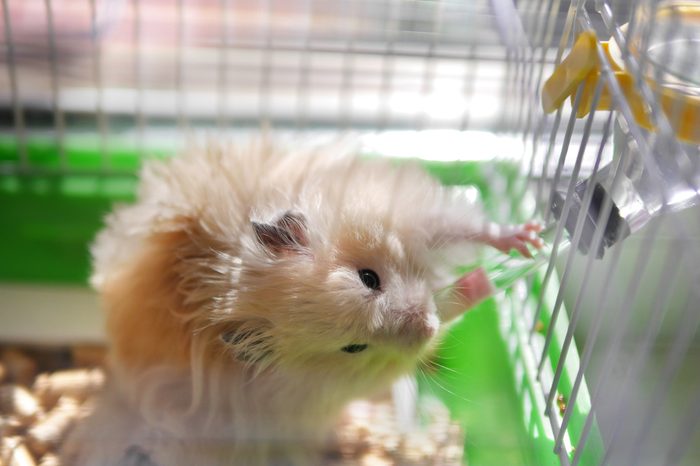
Pampered pets are more comfortable taking risks
An experiment detailed in Smithsonian in 2015 found that hamsters whose cages had received fancy upgrades (extra bedding, chew toys, a tent) were more likely to take a risk and try drinking from a new water dispenser that could either contain sweet or bitter liquid (they couldn’t tell which without trying it). Hamsters whose cages had been stripped of cardboard tubes and wheels, on the other hand, were less likely to go for it—seemingly figuring that they couldn’t expect nice things in life. Check out these 26 tips before you bring home any new pet.
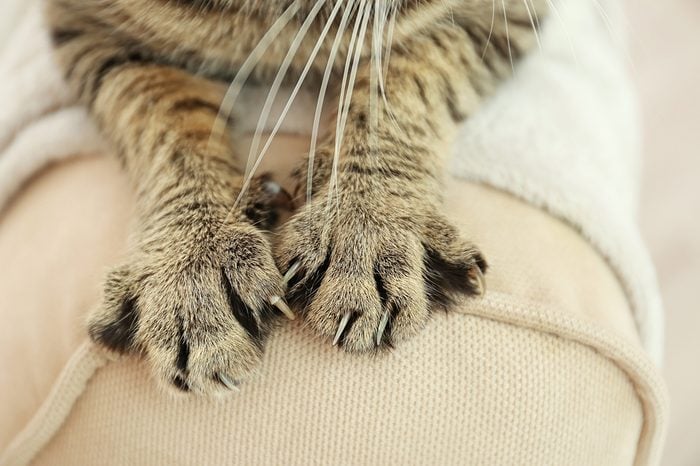
No one’s sure why cats knead
“Making biscuits” might be a behavior left from when cats were babies—kittens knead their mother’s teats to stimulate milk flow. So why do it to your blankets and hair in the middle of the night? Live Science says your cat might just feel as content and happy as she did as a little nursing kitten. Or she might be fluffing up the surface she wants to sleep on, like her wild ancestors used to do when they adjusted the foliage before bedding down. (Bass tells Mental Floss that the big cats at the Big Cat Rescue also make biscuits!) Read more about why cats knead.
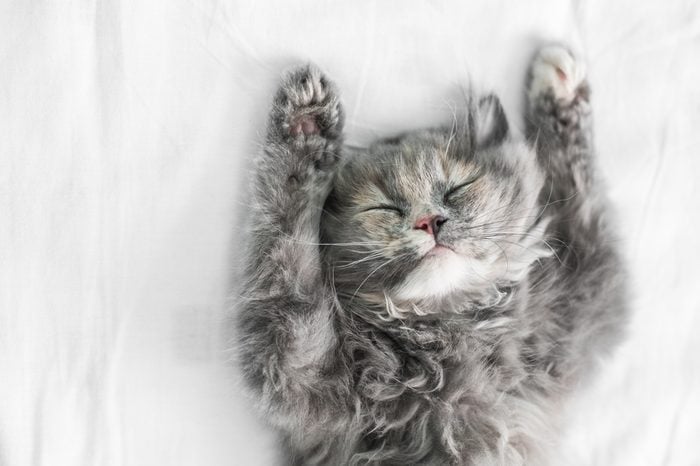
Cats can sleep 16 hours per day
Felines evolved to hunt, stalk, and kill prey, which consumes a lot of energy, so between meals, they have to sleep to conserve their energy. But even if your house cat isn’t wearing himself out tracking down mice, he’s built for a lot of rest, according to Catster magazine. Plus, the majority of cats’ sleep is light—they can wake up immediately from the dozing state, where they’re resting, but they still hear sounds (you can see their ears twitch and turn toward noises) and might even have their eyes slightly open. These photos of sleeping cats will make you smile.
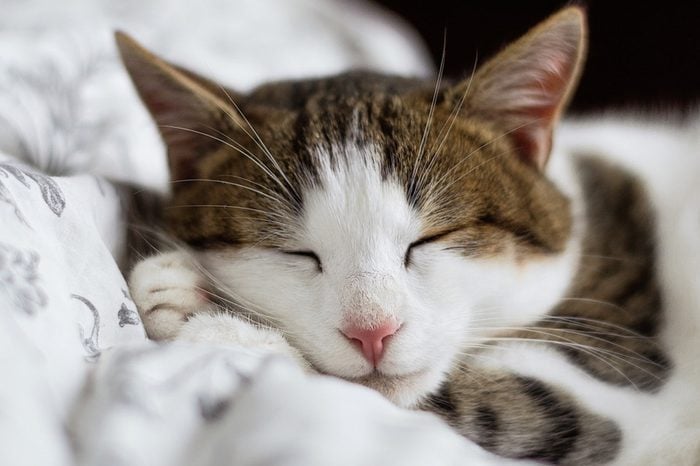
Cats dream when they’re sleeping deeply
About a quarter of most cats’ sleep time is spent in deep sleep, Catster says. That’s when they’re curled up with their eyes closed all the way. So what do they dream about? A study in the 1950s disabled the mechanism in cats’ brains that kept them from moving while they slept; the dreaming cats—while totally asleep—lifted their heads and acted like they were stalking prey and getting into fights, as reported in National Geographic. Here’s why you shouldn’t sleep with your cat.

Big dogs have bigger dreams
According to Coren, little dogs have shorter, more frequent dreams than big dogs, which scientists can track with brain scans just like they do in humans. But you can also see it happening if you watch them sleep: “When they start to dream, their breathing becomes irregular and you can see their eyes moving back and forth under their closed lids,” he says. A pug might have five or six one-minute dreams every 90 minutes, but a St. Bernard will be more likely to have a four-minute dream every 45 minutes.
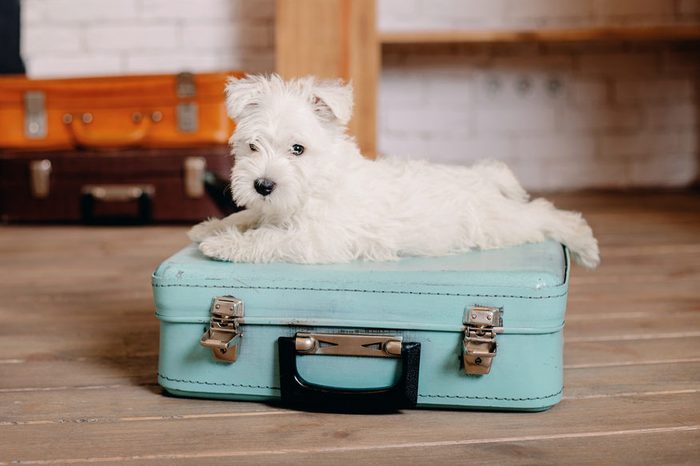
Puppies need to meet people and go places
Dogs that don’t meet people and other dogs when they’re five to 12 weeks old are more likely to grow up fearful and aggressive, Coren says, adding that within the first six months of life, puppies should meet 150 people and go to 50 different places. “It doesn’t have to be Zanzibar,” he says. “It can be rooms that are very different, machine shops, parking lots, whatever.” Here are 50 adorable puppy pictures that will make your day.
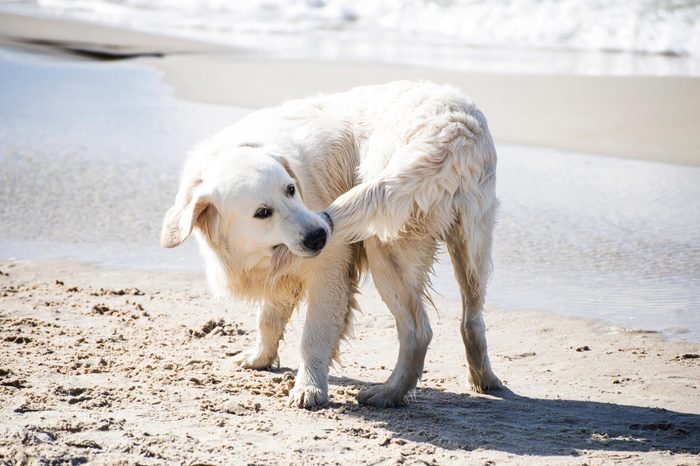
Dogs can be compulsive
Dogs chase their tails for lots of reasons: They’re itchy or have bowel irritation, they are indulging their predatory nature, or they’re just bored, according to Canine Journal. In certain cases, though, tail chasing can be a sign of canine compulsive disorder. The condition can develop when a dog is frequently stressed or frustrated, veterinarian Stephanie Liff told petmd.com. Once the stressor is removed, the dog will likely stop his odd behavior.
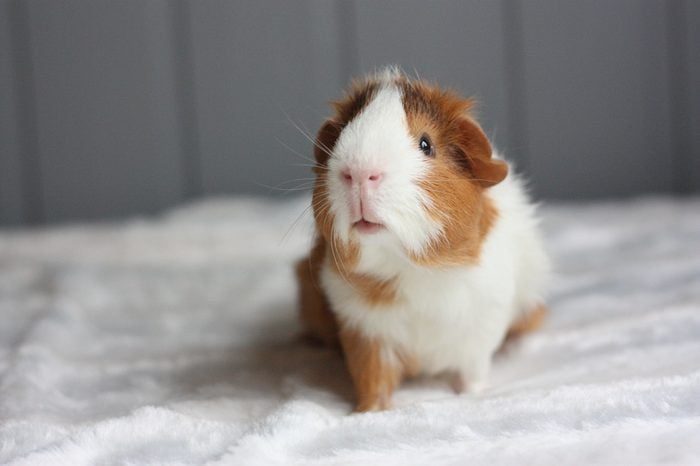
Guinea pigs talk to you
These classic classroom pets are surprisingly vocal when they get to know you. The Human Society says they make at least nine different sounds to express themselves. They purr like cats (and, as with cats, purring doesn’t always just mean they’re content), and sometimes make quiet squeaks as if they’re having a conversation. But the “wheek” sound they make when they hear you open a refrigerator will make you feel obligated to hand over a cucumber slice.
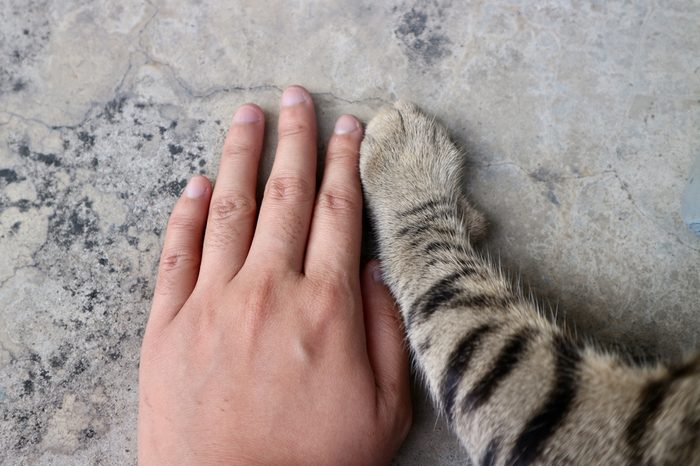
Cats might not be totally aware that we’re not cats
John Bradshaw tells National Geographic that while dogs obviously play with humans differently than they play with fellow canines, cats don’t adjust their social behavior much for us. “Putting their tails up in the air, rubbing around our legs, and sitting beside us and grooming us are exactly what cats do to each other,” he tells the magazine.
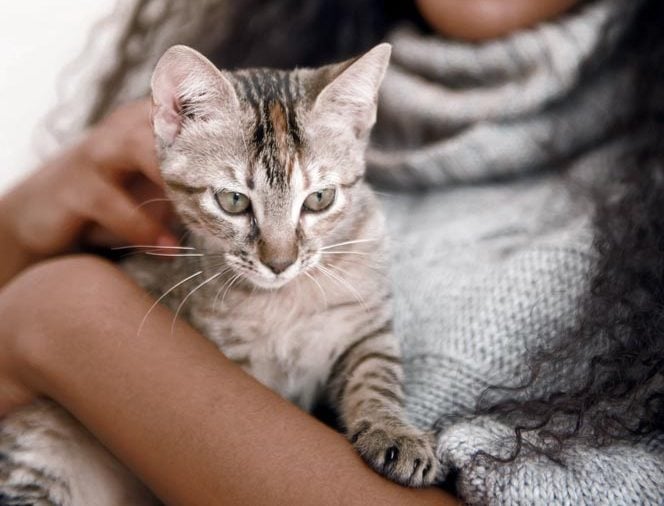
Cats do like being around us
They don’t always show it, but scientists are becoming more certain that cats are sticking with us by choice. “Cats can be incredibly social,” says Monique Udell. “In fact, in recent tests of cat preferences, the majority of pet and shelter cats preferred human interaction over toys, food, and even catnip.” These are the signs your cat trusts you.
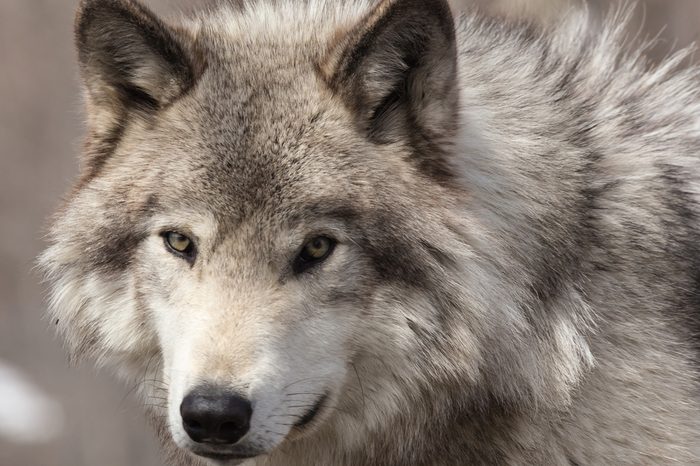
Captive wolves develop bonds with humans
A recent study in the journal Royal Society Open Science aimed to tease out whether dogs’ special traits are all a product of their separate evolution from dogs or whether some of their lovable personality quirks were also present in wolves. Researchers raised wolf puppies by hand, treating them just like they would dogs. The wolves’ reactions to humans were tested over time, and they continued showing special affection for the people who raised them—greeting their “foster parents” with boisterous face licks. The animals were more constrained with people they didn’t know. If you want to hear about an almost mystical interaction between man and wolf, this hiker saved a timber wolf’s life—and four years later, it still remembered him.
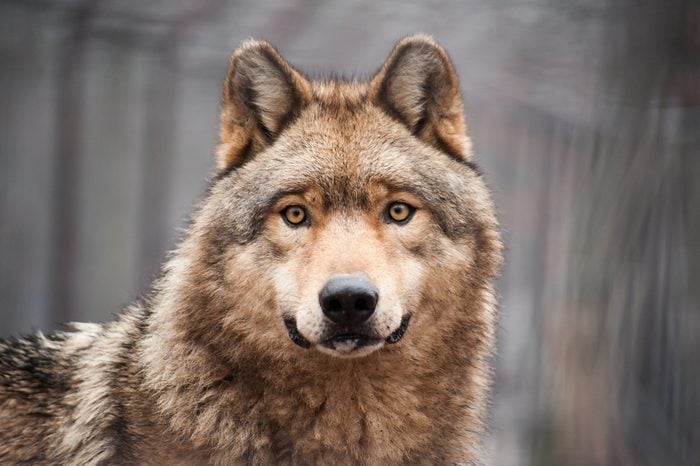
But wolves are not good pets!
An article by James Gorman, science reporter for the New York Times, writes that wolf researchers he’s interviewed tell him they never get completely comfortable with even hand-raised wolf pups the way they do with dogs. The animals’ predatory instincts are easily triggered—handlers say they won’t enter a wolf’s enclosure if they’re feeling sick or injured, and they would never instigate the type of chasing game that a Labrador retriever would love. Plus, wolves are more possessive of food and toys than dogs.
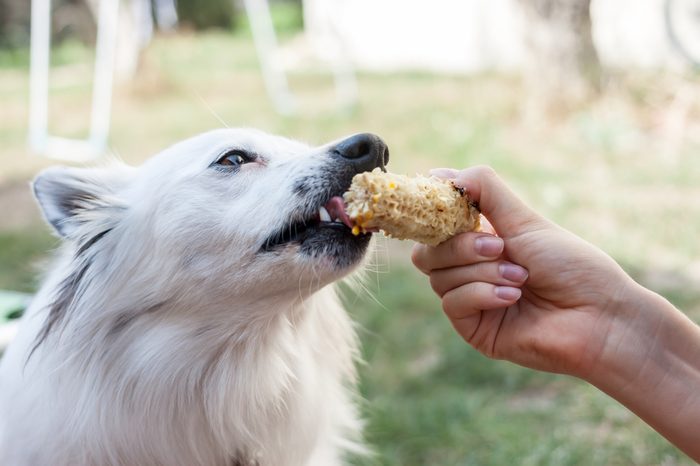
Dogs evolved to digest starches
A 2013 study published in Nature found that the genetic sequences of dogs are different from those of wolves not only in the genes that control brain development but also in those that enable starch digestion. One of the authors, Uppsala University researcher Erik Axelsson, tells National Geographic that the information fits in with the idea that wolves started hanging around human populations to scavenge food, and the tamest among them started the process of evolving into dogs.
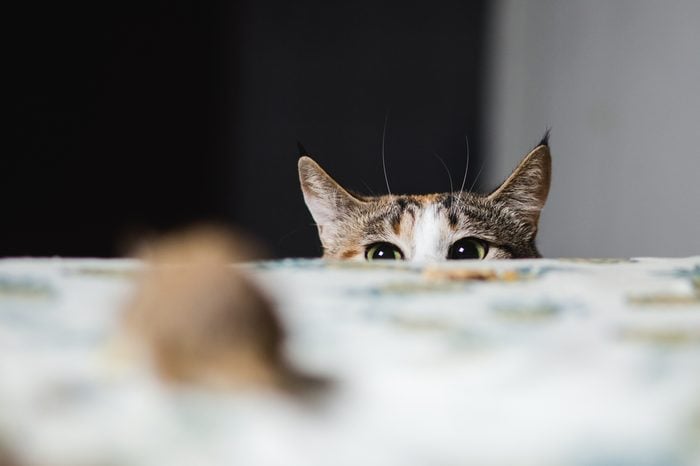
Cats don’t forget skills
According to Animal Planet, once cats learn a skill, such as hunting, they remember it. Even after they spend years indoors eating canned food, cats who learned to kill as kittens can still hunt down their own dinner if for some reason they’re denied the Meow Mix to which they’re accustomed.
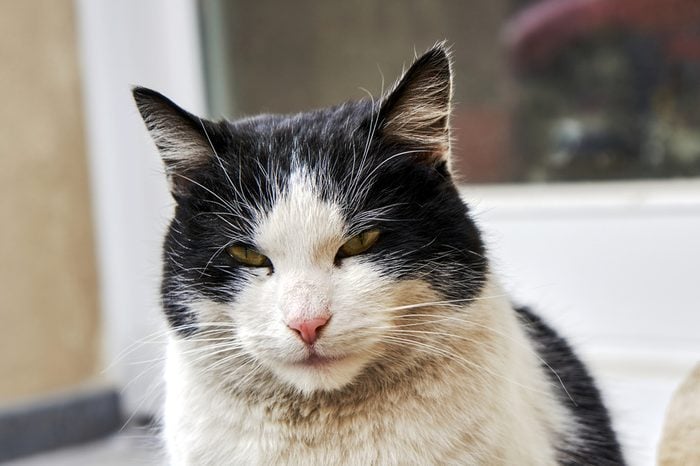
Cats remember slights too
Obviously, your feline friend remembers the sound of the can opener and the jingle of her favorite toy, but she also remembers who sprayed her with a water pistol to get her off the dinner table, according to John Bradshaw. “Cats don’t forgive, and once they realize a person is causing them anxiety or hurt, they keep away,” he told National Geographic in 2014. Check these signs your cat is mad at you.

Cats don’t like to share
Sharing food or water bowls or a litter box can make cats anxious, according to veterinarian Katrina Warren. If you have multiple cats, maintain separate dishes and litter boxes for each. Does your cat still seem anxious? Provide your kitty with a place to perch, since cats appreciate high places and autonomy.
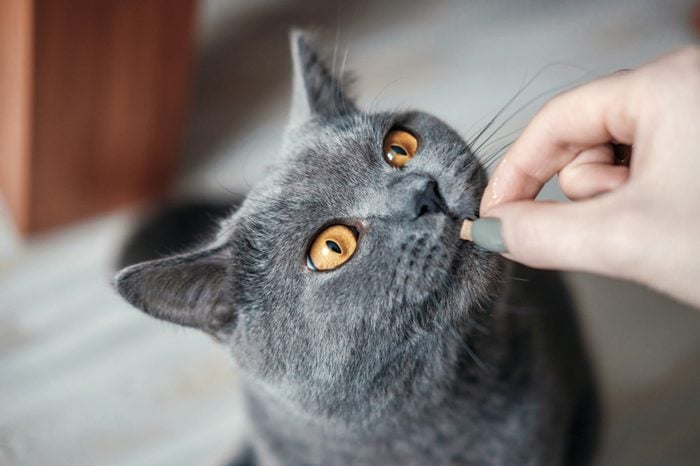
You’re training your cat, whether or not to you mean to be
Many people think of dogs as trainable and cats as independent-minded, but the truth is that whatever behavior you’re rewarding (intentionally or not) is being reinforced in your cat, Sarah Ellis, co-author of the book The Trainable Cat, tells National Geographic. For example, running over and lifting your cat off the kitchen counter might be just the loving attention she craves, teaching her that walking on the counter is a good idea. Instead, Ellis suggests using treats to teach Kitty to come when called, so you have a positive way to lure her off the counter. This is similar to the techniques San Diego Zoo Safari Park keeper Lacey Byrnes uses with big cats when teaching them to hold still for veterinary inspections or to climb in a transport crate, according to the park’s blog Zoonooz. Here’s how to help your cat learn 5 skills that will change your life.

Dogs can read our emotions
“Tension flows down the leash,” Coren says, encouraging owners (of young dogs, especially) to keep the leash loose. “If you’ve had a crappy day, don’t train your dog until you feel better,” he says. Coren recounts a story of a woman he met who didn’t understand why her dog started acting aggressively. When he found out she was upset about a recent breakup with a boyfriend, he suggested that she focus on getting lots of exercise and socialization with her dog. “If you’re tense and upset, your dog will be tense and upset.” These are the silent signs your dog is depressed.
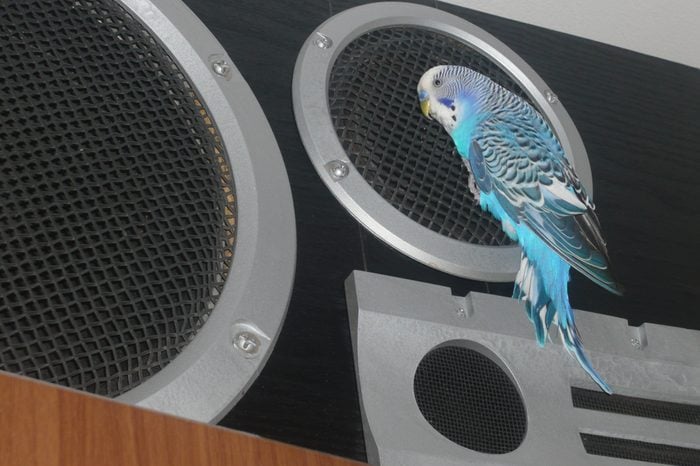
Some parrots can dance
In 2009, Harvard researchers watched more than a thousand YouTube videos of animals dancing and determined that only parrots and one species of elephant actually moved to the music. The study, which was explained in New Scientist, showed that the parrots could stay synchronized with the beat of human music even when the rhythm changed.
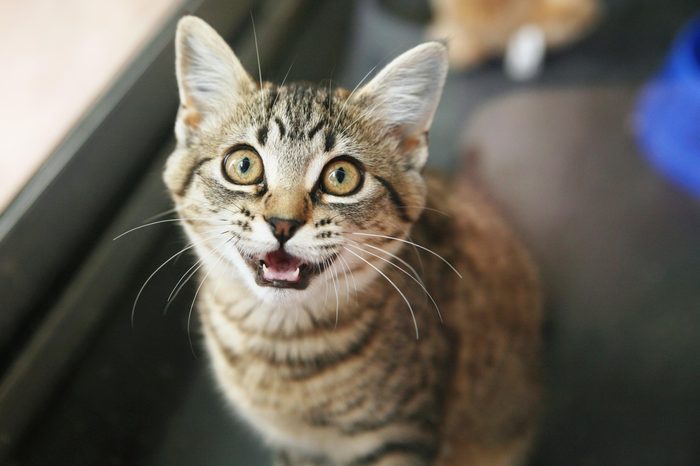
Your cat’s age may affect their meow
Cats may become increasingly vocal as they get older. Why? Age-related dementia and failing eyesight are two potential explanations, John Wright, PhD, a certified applied animal behaviorist at Mercer University, told humanesociety.org. An anxious cat may vocalize more, and a feline who’s losing his hearing may also meow louder.
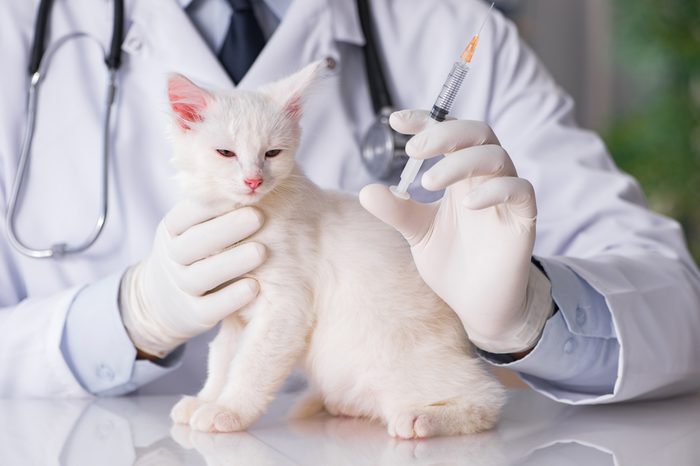
Cats are stressed more than people realize
One of the most common reasons cats visit veterinarians is to have wounds from catfights treated, Bradshaw tells National Geographic. He says feline skin conditions and bladder wall inflammation have been linked to stress hormones, too, and it’s possible that many cats are unhappy living with other cats, and need some more personal space. These are the subtle signs your cat is depressed.
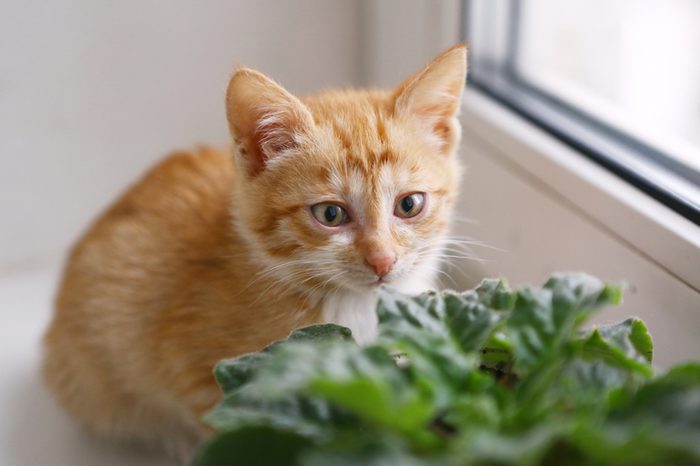
Cats connected with humans when we took up agriculture
A 2008 study conducted by researchers at the University of California, Davis, looked at genetic material from more than 11,000 cats and confirmed that they were domesticated between 8,000 and 5,000 years ago in the Fertile Crescent region of the Middle East, around the time that humans started raising livestock and growing crops. Stored grain would have attracted mice, rats, and other rodents, providing a plentiful food source for cats—which grateful humans would have been glad to welcome into their homes and farms. “Early domestic cats likely evolved hunting vermin around human civilizations,” says Monique Udell. “Because of this, they retained many of their natural hunting and survival behaviors common to other cat species.”
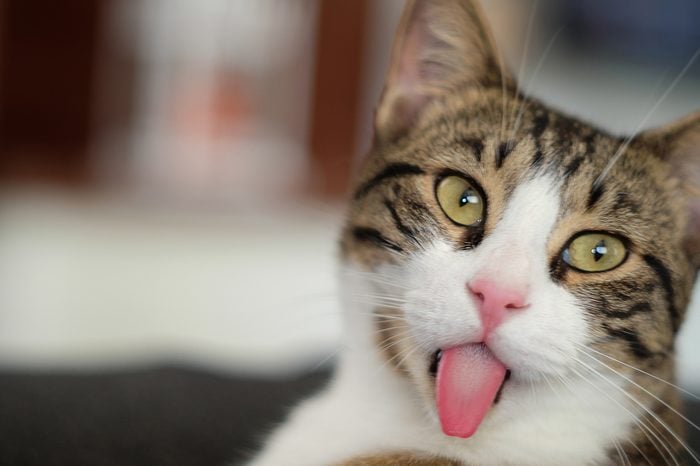
Cats have facial expressions
The journal Behavioural Processes published a study in 2017 showing that cats express their emotions on their faces, just like we do. A facial-expression coding system was used to track the cats’ faces throughout short video clips of animals at a Canadian shelter. Researchers determined that blinking and half-blinking are associated with fear. Cats show frustration by hissing, nose-licking, raising their upper lips, wrinkling their noses, and showing their tongues. When they’re relaxed, they often gaze to the right.
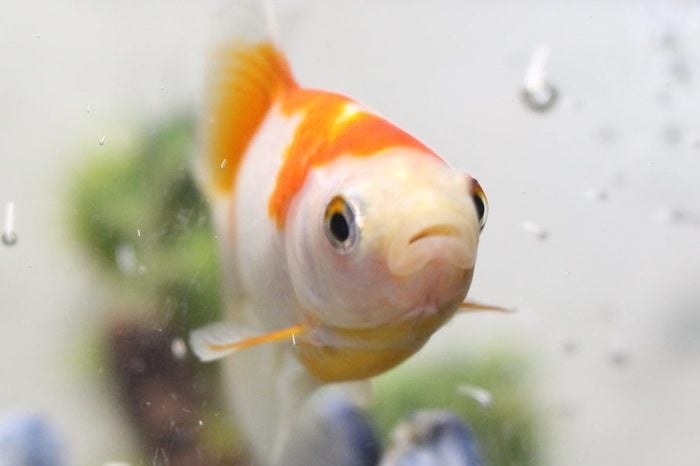
Fish can recognize human faces
Archerfish hunt by shooting a stream of water at insects. Researchers have taken advantage of this special skill to test their ability to recognize human faces—they taught the fish that when they shot water at an image of a specific face on a computer screen, they would receive a snack. When scientists showed the fish a variety of faces on the screen, they only shot water at the one that had previously resulted in food. It couldn’t hurt to peek into the aquarium more often!
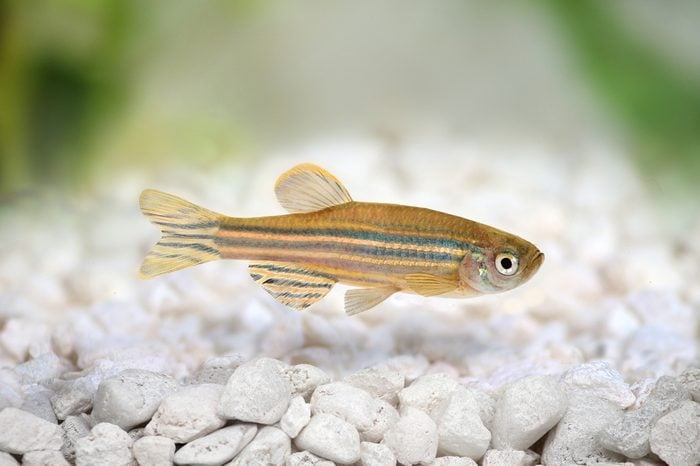
Aquarium fish can get depressed
Julian Pittman, a professor at the Department of Biological and Environmental Sciences at Troy University in Alabama, recently told the New York Times about research he’s doing with zebrafish to develop new antidepressant medications for humans. He described the neurochemistry between the two species as being scarily similar. His lab induces a depression-like state in fish (by keeping them drunk on ethanol for a couple of weeks and then removing the alcohol so the fish goes into withdrawal), which results in them swimming listlessly at the bottoms of their aquariums. When given effective antidepressant medications, the zebrafish swim at the top of their tanks again. Researchers believe pet fish can become depressed if they don’t have enough space (fishbowls are bad) or get bored—adding objects to their tanks and moving things around is a good idea.
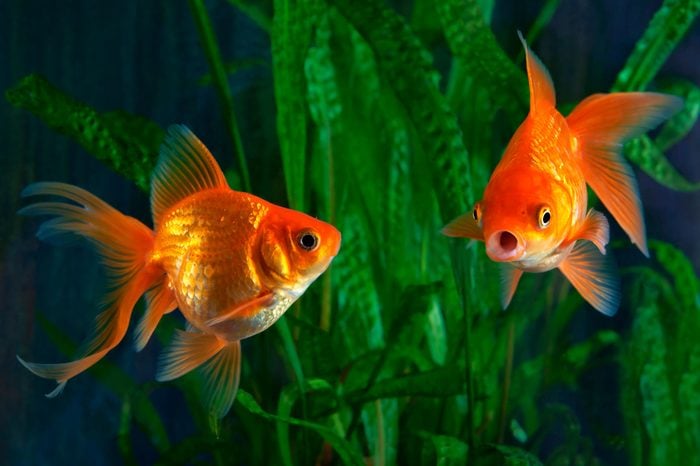
Fish appreciate a good joke
Psychologist Richard Wiseman, PhD, reports that more than half of the fish owners in an online survey for his website, Quirkology, said their fish had a good sense of humor. In fact, the survey revealed that fish appreciate humor more than cats, horses, and birds—but not as much as dogs do.
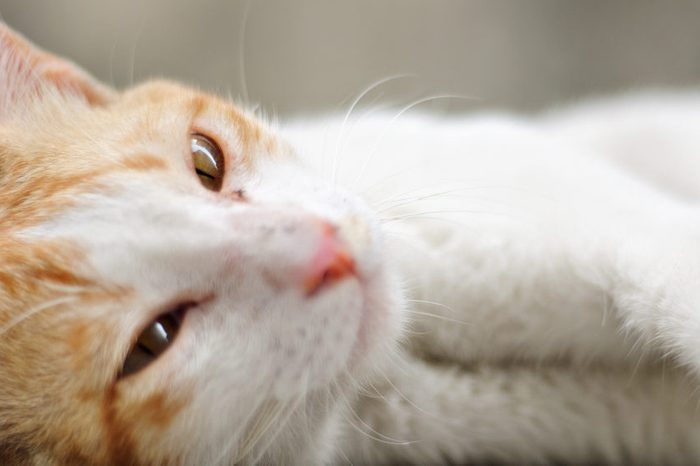
Purring doesn’t always mean cats are happy
Bradshaw tells the Cut that cats do purr when they’re content and happy, but that’s not the whole story. They also sometimes purr if they’re sick or injured—they’re essentially saying they need your help, or they want you to stay nearby for comfort. Another theory is that the action of purring is physically healing for cats. Gary Weitzman, a veterinarian and CEO of the San Diego Humane Society, told the BBC recently that the frequency of the purr is similar to frequencies of vibration that are associated with bone and tissue healing. Read more about why cats purr.
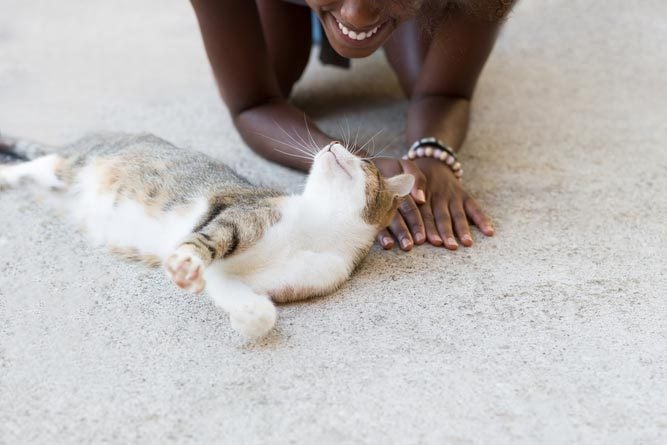
Cat purrs might be good for humans too
Weitzman thinks the frequencies of cats’ purring might confer health benefits on nearby humans as well. “It calms us and pleases us, like watching waves against a beach,” he told the BBC. “We respond to a cat’s purr as a calming stimulus and may have even genetically selected cats with more propensity to purr.” A 2009 study showed that cat owners have a reduced risk of death from cardiovascular disease, including stroke. Here are more health benefits of owning a pet.
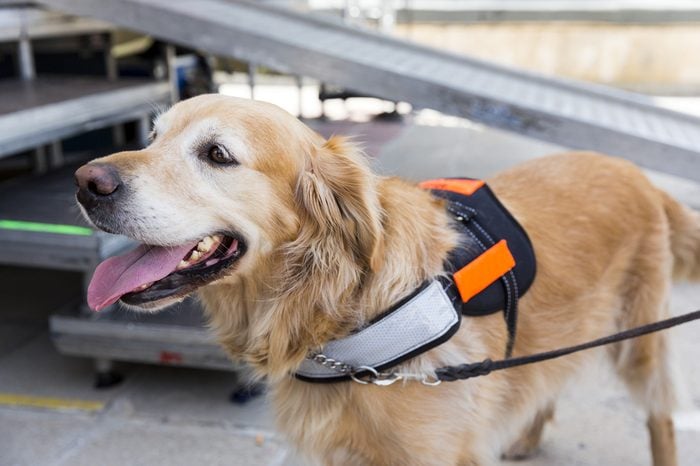
There are more than 50,000 therapy dogs in the United States
Specially trained and certified dogs work with people who have cancer and dementia as well as post-traumatic stress disorder, and their effectiveness has been proven: A 2007 study published in the American Journal of Critical Care found that patients hospitalized with heart failure who saw a therapy dog for 12 minutes experienced drops in blood pressure, stress hormones, and anxiety.
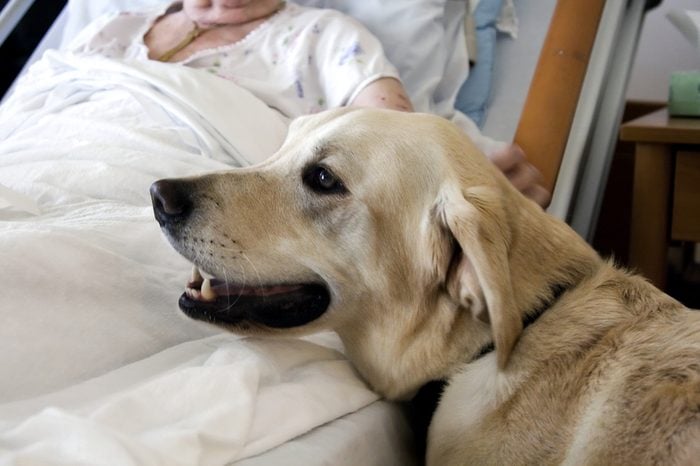
Therapy dogs enjoy helping people
To make sure offering therapy to humans wasn’t causing stress to the dogs, researchers looked at 26 canine therapists visiting more than 100 patients in five hospital pediatric cancer wards for a study described in National Geographic. The dogs’ cortisol levels were no higher at the hospital than they were when the dog was at home, showing that the job wasn’t causing the therapists undue stress. However, observations showed that the dogs preferred certain aspects of the work over others: They were happier when kids were talking to them and playing with them than when kids brushed them or drew pictures of them. This is what your dog actually wants from you.
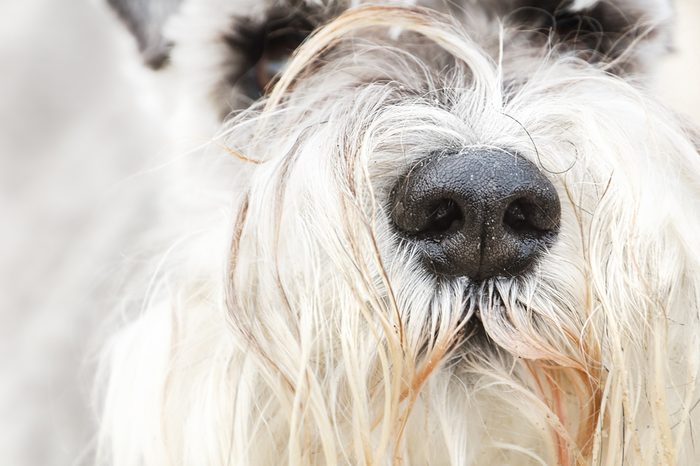
Dogs can smell anything
Dogs take in more information through their noses than from any other source. Their sense of smell is between 10,000 and 100,000 times as acute as ours is, James Walker, former director of the Sensory Research Institute at Florida State University, told PBS. A stray dog in Seattle was able to detect orca scat a mile across Puget Sound. A drug-sniffing dog found marijuana submerged in gasoline inside a gas tank. That means they’re going to know if you’ve been around another dog while you were away from them.
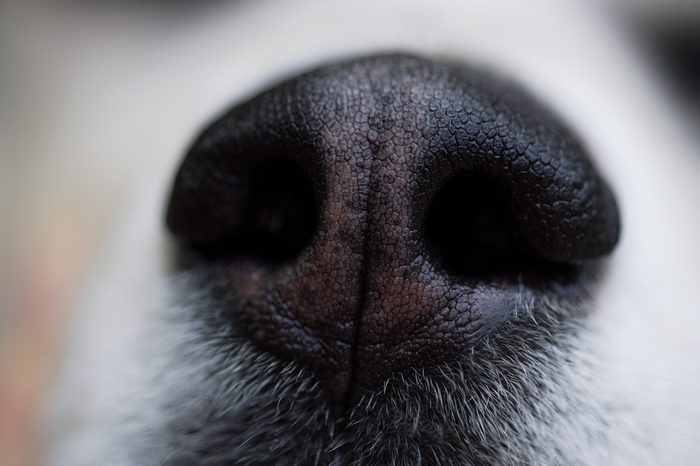
Dogs can tell which nostril a smell entered through
Their noses are elaborate machines: They have up to 300 million olfactory receptors, compared with a measly 6 million for humans. Plus the part of their brain that interprets smell data is proportionally 40 times bigger than ours. When air enters their noses, part of it goes straight to the lungs, but a small amount gets routed to an area at the back of the nose where structures filter out odor molecules based on different chemical properties. Then dogs exhale through the sides of their nostrils so they can keep inhaling from the front, according to PBS. Next, find out the 50 secrets your pet wishes you knew.